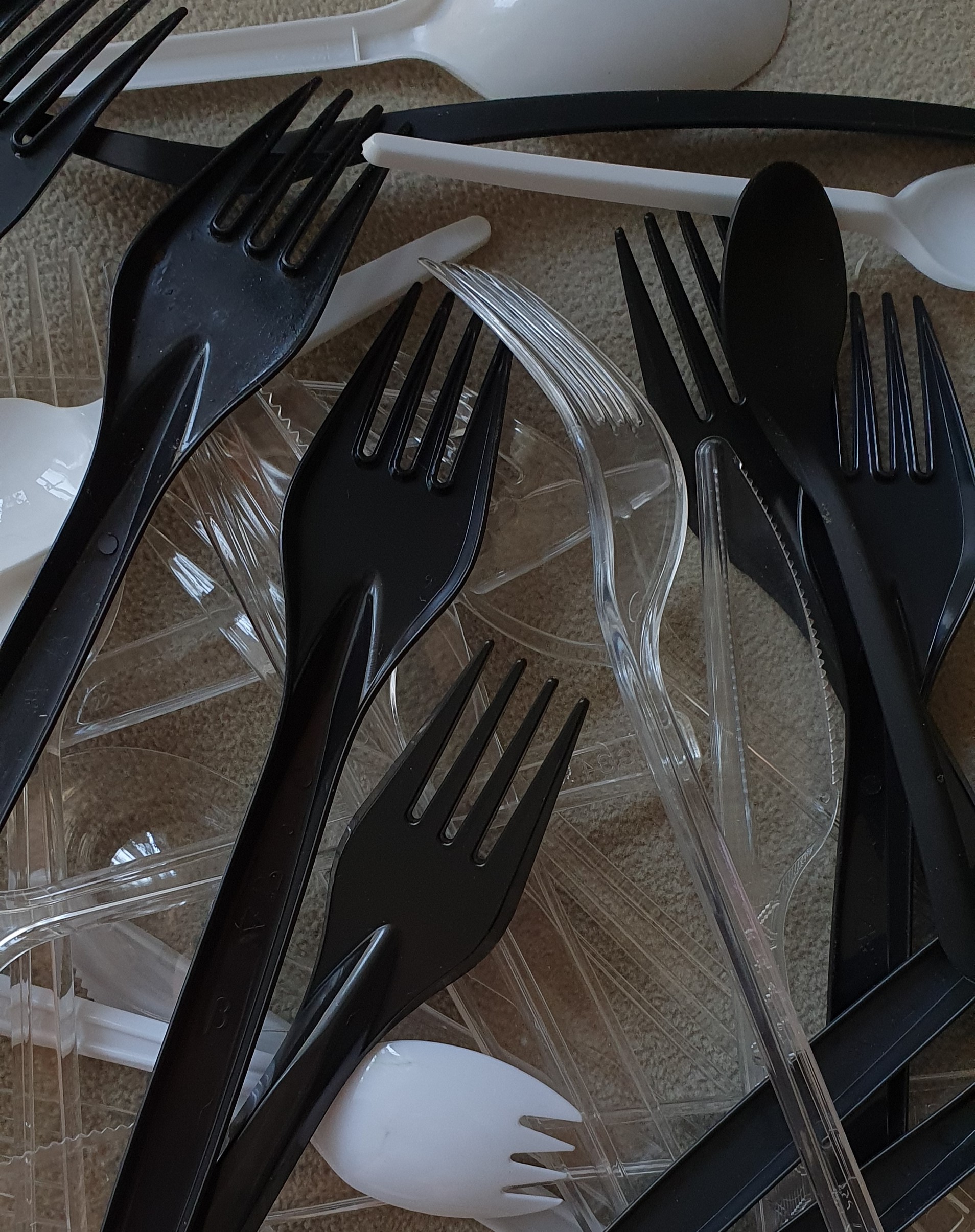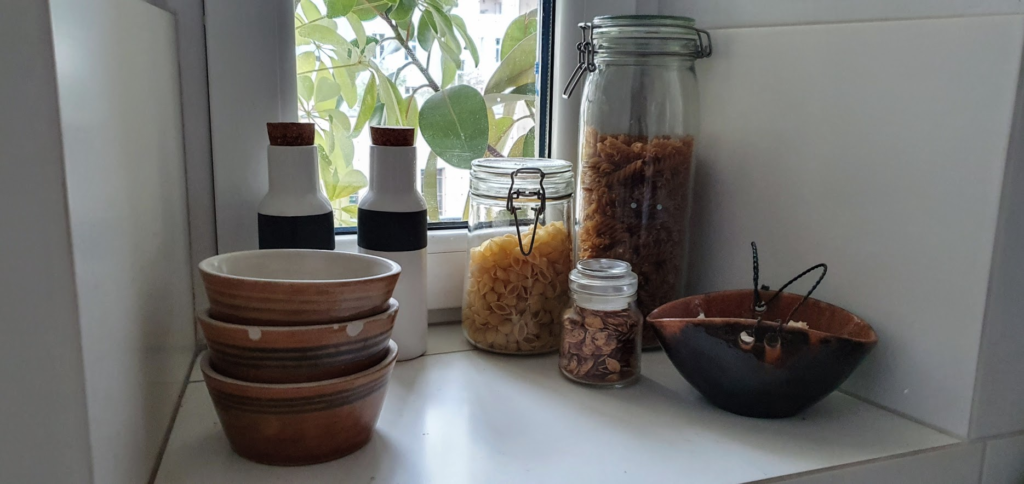Plastic has become an integral part of our modern lives, offering versatility and convenience. However, it is crucial to understand the different types of plastic and their environmental impact. Knowledge helps us to understand the problem and it’s essential to take thoughtful actions.
The best thing that we as individuals can do is reduce our plastic usage and be more mindful about what we’re consuming.
Plastic Types
Plastic is a synthetic material made from polymers, offering flexibility and moldability for various applications. There are many types of plastics and the industry is still growing, but these are the common types of plastics that you should know:
- Polyethylene Terephthalate (PET)
Widely used in beverage bottles, food containers, and polyester fibres. - Polyethene (PE)
Used in everyday items like plastic bags and food packaging. In this category, you will find PE-HD and LDPE. - Polyvinyl Chloride (PVC)
Used in construction materials, pipes, and even clothing. - Polypropylene (PP)
Known for its durability and heat resistance, suitable for food containers and medical equipment. - Polystyrene (PS)
Found in disposable food containers and packaging materials. - Others
There are numerous other types of plastics, each with unique characteristics and applications.
Are you struggling with markings on boxes? It should be easy to learn all the symbols on labels but not everyone remembers what means what, so here is a summary that you can revisit while shopping.
PIN PLASTIC TYPES FOR FUTURE REFERENCE

Brief History of Plastic
The first usage of plastics is related to our great ancestors. They were using natural plastics like rubber balls made from gum tree resin.
In the XIX century, people started to look for some alternative to Ivory, to save wild live and prevent the extinction of elephants. This was the main reason for coming back from natural plastic. Alexander Perks invented the first replacement — Celluloid, and then there Leo Baekeland invented Bakelite.
The next step in plastic history was plastic made from fossil fuels. Companies promoted it as a more affordable solution that could conserve natural resources, aligning with the noble goal of preserving the planet.
Plastic played a big role during World War II, finding its way into various military equipment like helmets, guns, parachutes, and aircraft. The demand for plastic during this time led to the emergence of different types of plastics.
After the war, plastic started to explore new markets, which led to the rise of the single-use plastic era. Not only was it inexpensive, but it also offered convenience, becoming a common feature of everyday life.
The real golden era of plastic started in the ‘60, it was used in packaging, and in households but also as a newly fashionable piece in clothes, furniture, jewellery and gadgets.
Since then we’ve been producing more and more plastic, you can find it everywhere and only a small fraction of all plastics are recycled.
Plastic is easy to make but does not decompose, causing pollution in the ocean and harming wildlife. Fortunately, we are now seeing an increase in the availability of natural and biodegradable plastic alternatives. People are also becoming more conscious of the issue of plastic pollution, and there are numerous initiatives in place to address this problem.
Production and Environmental Impact
Plastic production has revolutionized the modern world, providing us with a versatile and convenient material that has numerous applications. However, the process of plastic production comes with its own set of environmental challenges.
Plastic is primarily derived from fossil fuels, such as oil and natural gas, through a complex series of chemical reactions. This extraction and refining of fossil fuels contribute to greenhouse gas emissions and the depletion of finite resources. Additionally, the production of plastics involves the use of various chemicals and additives, some of which can be harmful to human health and the environment.
Understanding the environmental impact of plastic production is crucial in finding sustainable alternatives and adopting responsible practices to minimize our reliance on this pervasive material.
Plastic Recycling and Waste Management
Recycling involves collecting, sorting, and processing plastic waste to transform it into new products. The recycling process varies depending on the type of plastic, as different plastics have distinct properties and recycling requirements. When plastic is recycled, it can reduce the demand for virgin plastic production, conserve valuable resources, and divert waste from landfills.
However, plastic recycling faces numerous challenges, including contamination, limited infrastructure, and the complexity of sorting different types of plastic. To maximize the effectiveness of recycling, it is essential for individuals, communities, and governments to prioritize proper waste management, improve recycling systems, and educate the public about the importance of recycling.
Remember that recycling isn’t the first step, it’s the last: Refuse, Reduce, Reuse & Recycle.
Promoting Responsible Plastic Usage
To address the plastic problem, it is crucial to adopt sustainable practices. Here are some steps to promote responsible plastic usage:
- Reduce single-use plastic consumption.
- Opt for reusable alternatives.
- Support businesses that use recycled or biodegradable plastics.
- Advocate for improved waste management and recycling systems.
Plastic Isn’t Always Bad
It’s really essential for medical care, it’s cheap and easy to form. It’s light so it is more efficient for transport. The biggest problem is that in many cases it’s used once and tossed away.
The era of single-use plastic should come to an end, but remember that in many cases it’s more sustainable to reuse what you have (even if it’s plastic) than to buy unnecessary replacements.
By understanding the types of plastics, their properties, production processes, and environmental impact, we can make informed choices and take steps towards reducing plastic waste.
If you want to become more mindful of the plastic in your surroundings try Creating a Plastic Free Home.









